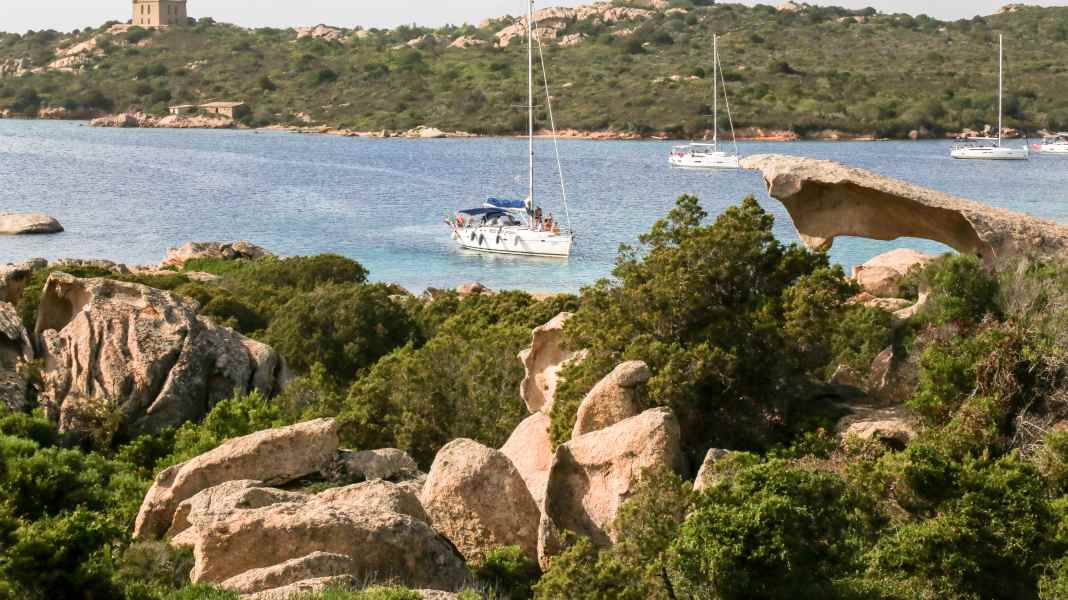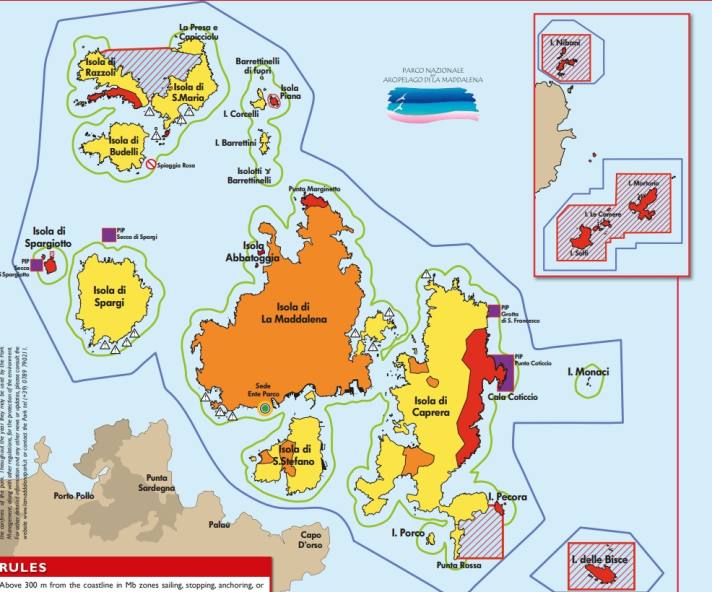
The Maddalena National Park includes practically all the larger and smaller islands on the popular north-eastern tip of Sardinia: La Maddalena, Caprerea, Santo Stefano, Spargi, Budelli, Razzoli, St. Maria and several more. Crews are now only allowed to call at the bays and anchor there during the day. From 9 p.m. in the evening until 8 a.m. in the morning, they must weigh anchor and head for a harbour or a bay that is not part of the national park. This was announced in a new directive published in August.
Alternatively, boats can moor and stay overnight at the national park's buoys, which are available for a fee. Although there are quite a few of these in many bays, the number is by no means sufficient for the crowds in the summer months, so the bays were always well filled with anchored yachts. The editorial team received reports from a German crew who were made aware of the regulation by the base staff during a trip at the end of August. They were disappointed as they had been looking forward to the bays as one of the highlights of the area. However, as the crew didn't want to risk not getting hold of a buoy and then possibly having to motor for an hour or two to the mainland in the afternoon in the doldrums, they decided not to visit the archipelago at all.
Offences are punished draconically
An enquiry with local charter companies revealed that they were informed of the new regulation at the same time as the directive from the national park administration and were also informed of the draconian penalties that would be imposed during inspections if crews were found at anchor during the restricted period: from 596 euros upwards! In fact, one charter company reported that one of its customers had already had to pay the fine, even though he was able to prove that he had not stayed overnight, but had simply left the Sardinian mainland early in the morning and then anchored in a bay after 6am. So the authorities are getting serious, the national park rangers are checking the bays with their RIBs and making no exceptions.

The charter companies in Sardinia also face drastic penalties
What is even worse for the charter companies is that they have also been threatened with a further penalty: If a boat in a fleet is caught committing the offence twice in a calendar year, the boat will be banned from accessing the national park area for a year. An absolute disaster for the fleet operators, as they would have to inform their next customers, who are not guilty of any offence, that they can no longer call at the islands, not even for anchoring during the day.
The charter companies are correspondingly worried. It is rumoured that they hope the authorities will return to the "old" regulation, which was also unusual: the ban had allegedly been in place since 2007, but was probably only limited to the strictly protected A zones and was never implemented or even sanctioned. The authorities justify the drastic turnaround with the protection of the Posidonia seagrass in the national park. It has been known for years that the anchors of yachts severely damage the meadows and it has therefore long been forbidden to anchor over them. This actually applies throughout the EU. Crews have therefore always been asked to anchor only over sandy bottoms without seaweed. This has also been randomly checked in the past, with national park rangers regularly patrolling the area.
The protection of seagrass meadows is handled differently
The neighbouring island of Corsica has similar regulations and rangers also carry out checks there. The fact that anchoring during the day poses less of a threat to seagrass than at night is of course a somewhat astonishing realisation. It would probably make more sense to significantly increase the number of national park buoys, as other areas in the world (e.g. the BVI) do. If these are carefully anchored, life at the bottom thrives again after a few years, as divers unanimously confirm. However, the complete recovery of a meadow can take time, Posidonia only grows about one centimetre per year.
Crews now only have the marinas on the main island of La Maddalena, such as Porto Gala Gavetta or Porto Manigavolpe, as alternatives for overnight stays in the national park. Even in the season, these are always quickly full. So if you want a place here, you have to arrive early or try to book. In any case, the crowds are likely to be considerable from the afternoon onwards in the summer months. Alternatively, the large bays of Porto Pollo or Porto Pozzo or the south coast of Corsica or the French Lavezzi Islands offer an alternative.

